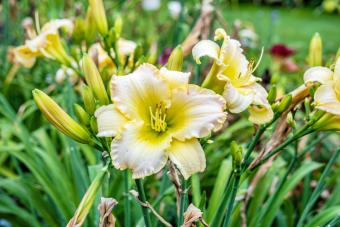
Horsetail (Equisetum spp.) is an unusual water-loving native that look like little else in the plant kingdom. It makes a striking architectural statement in the landscape, but it must be used carefully since it is known to spread aggressively.
A Bizarre Botanical

Horsetail is found growing wild along stream banks and river bottoms throughout North America. It is so named because its roots resemble the coarse hair of the tail of a horse.
It emerges from the ground each spring as a slender spear that looks something like asparagus. It then grows to a height of 3 or 4 feet but remains as a stiff vertical stalk with no leaves. Horesetail has hollow segmented joints like bamboo. It is also called scouring rush. It's hardy in USDA zones 3 to 11.
Growing Requirements
The primary requirement for growing horsetail is abundant water. It will grow in sandy soil or clay, but is most profuse in rich topsoil. It is happy to grow in part shade or full sun.
How to Plant Horsetails
Horsetails are grown from nursery plants, not seed, though pieces of rhizome may also be transplanted to grow new plants.
Plant horsetail rhizomes about two inches below the soil. If using potted nursery grown plants, simply plant them so the soil line is then even with the surrounding grade. Make sure to keep the soil moist at all times when the plants are young. Once established they can withstand short periods of dry weather.
Landscape Use

The uniform reed-like appearance of horsetail make it useful as a tall groundcover or as edging. The stalks grow into a dense wall in full sun, so it can also be used as a low hedge or vegetative screen, as well. Where spreading is not a concern, plant it in naturally moist areas such as around wetlands, streams and ponds. In frost-free climates, horsetail is evergreen, but elsewhere the stalks will turn brown in winter.
Keeping Horsetail Under Control

Horsetail is easy to grow, but its underground rhizomes make it difficult to keep from spreading into areas where it is not desired. Once established it very difficult to eradicate, so it's best to confine it with some type of barrier.
- The simplest method is to grow it in a pot or planter.
- You can also install an underground barrier around it like those used to control bamboo.
- Another popular technique is to plant horsetail in an island within a concrete patio--it has a very modernist look in this context and is unable to escape into the rest of the landscape.
Care and Maintenance
Horsetail is not bothered by pests and disease and requires very little maintenance. Other than making sure the soil stays moist, and the plant does not creep into areas where it is unwanted, the only maintenance required is to cut the dead stalks to the ground each year in fall when they turn brown.
Care is the same for potted plants.
Varieties

Horsetail is commonly available in nurseries and is often grouped with the wetland and aquatic species. In addition to the common horsetail species described above, nurseries often stock the following varieties:
- Field horsetail (Equisetum arvense) - A variety with stringy leaf-like appendages arranged symmetrically around the stem; USDA zones 2 to 9
- Dwarf horsetail (Equisetum scirpoides) - Similar to the full-sized variety but grows just 6 to 8 inches tall; USDA zones 5 to 11
One of a Kind Garden Plant
Even without foliage or flowers, horsetail is sure to turn heads in the garden and spark a conversation. It is one of the most unique and easily grown plants, but it must be used wisely.







